Key takeaways:
- Acting techniques like Stanislavski and Meisner emphasize emotional authenticity and connection, respectively, allowing actors to explore their craft in varied ways.
- Training in acting fosters discipline, resilience, and creativity, enabling actors to take risks and deepen their understanding of character motivations.
- Networking within training environments is crucial for building relationships that can lead to future opportunities and collaborations in the film industry.
- Embracing vulnerability and adaptability are key lessons learned through the acting journey, enhancing performance and strengthening connections with audiences.
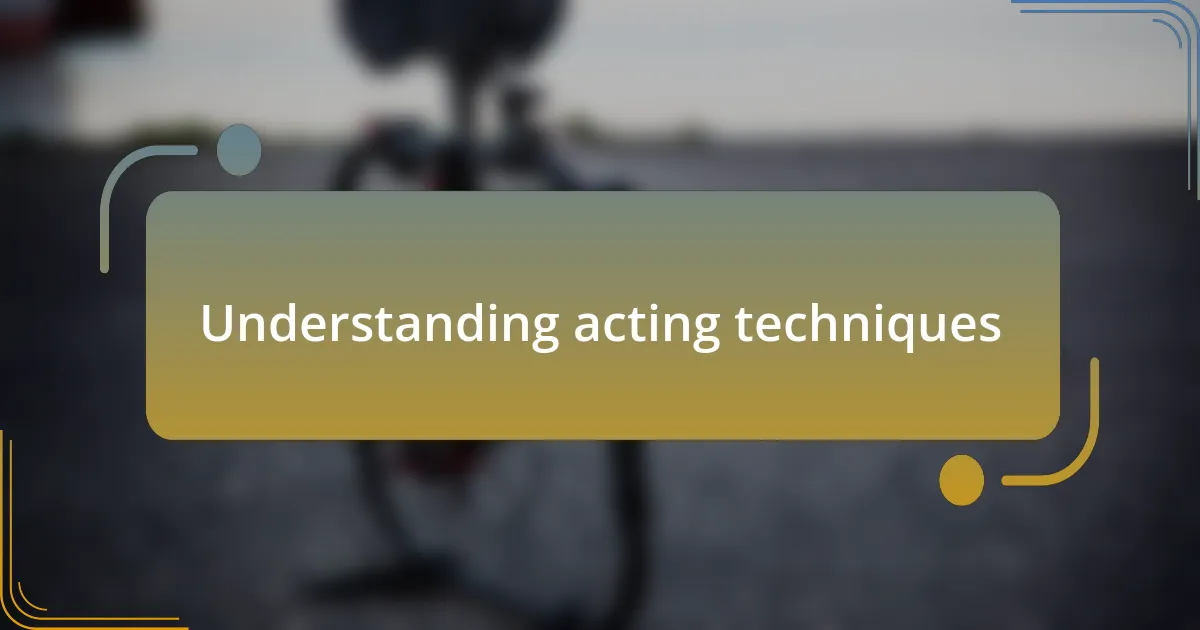
Understanding acting techniques
Acting techniques serve as the backbone of a performer’s craft. Each method, whether Stanislavski’s focus on emotion or Meisner’s emphasis on spontaneity, offers unique pathways to connect with a character. I vividly remember my first time exploring the Stanislavski method in class; the sheer vulnerability of digging deep into my own emotions was both exhilarating and daunting.
When I first encountered the Meisner technique, it struck me how immediate and alive acting could feel. The simple exercise of repeating phrases back and forth with a partner forced me to listen with intent, reshaping my understanding of responsiveness in performance. Have you ever felt so connected in a moment that it felt like time paused? That’s the essence of effective improvisation — a dance of instincts and reactions, where the heart takes center stage.
It’s crucial to recognize that no single technique holds all the answers; instead, the beauty lies in exploration. I often encourage emerging actors to sample different approaches and reflect on what resonates with them. In my journey, it’s been through trial and error that I’ve found my most authentic self on stage, reminding me that discovery is just as vital as mastery.
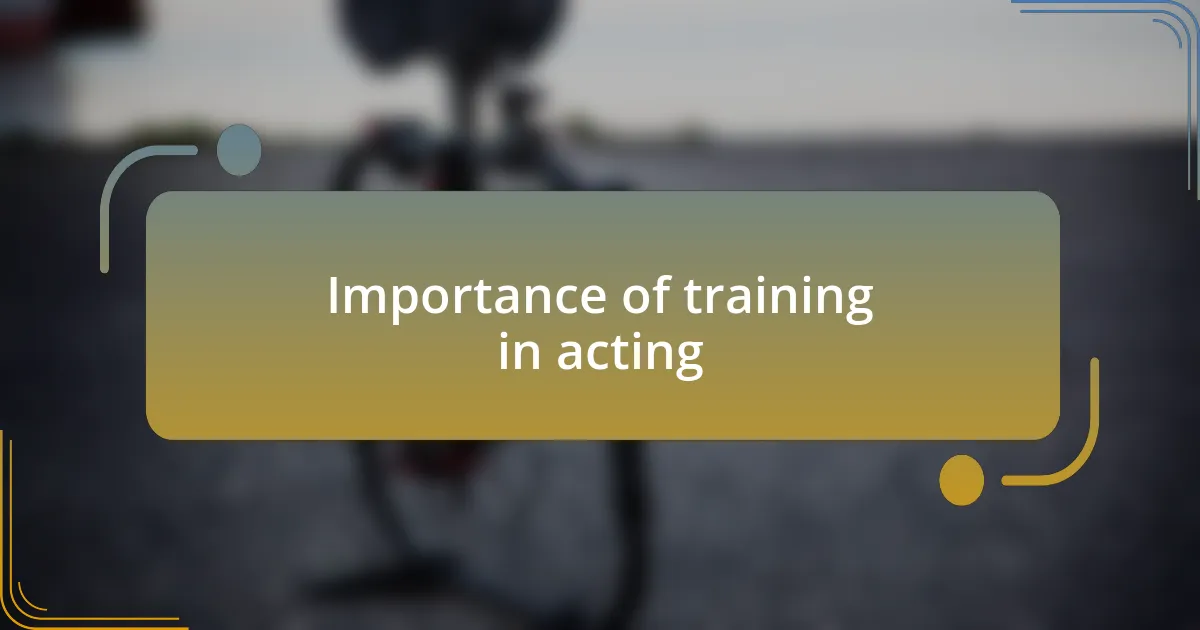
Importance of training in acting
Training in acting is fundamental for building a solid foundation in the craft. I recall my early days in the theater, where diligent training not only sharpened my skills but also instilled a sense of discipline I hadn’t expected. Without that rigorous practice, would I have had the confidence to take on challenging roles? The answer is a resounding no.
Moreover, the structured environment of training allows actors to experiment without fear of judgment. I remember a scene study class where we were encouraged to push our boundaries and make bold choices. The freedom to fail in a supportive space is invaluable; it teaches resilience and fosters creativity. How often do we give ourselves permission to fail? Perhaps that’s where the real growth happens.
In addition, proper training helps actors develop a deeper understanding of the emotional and psychological aspects of their characters. I can’t forget the transformative experience I had while delving into character backstories during my training. It opened my eyes to the nuances of motivations and relationships, making my performances richer and more layered. Isn’t it fascinating how training can take a performance from good to unforgettable?

Overview of film industry training
Film industry training encompasses a variety of methods aimed at honing the skills necessary for a successful career in acting. Throughout my own journey, I’ve come to appreciate the diversity within training programs—from improvisation workshops to intensive scene study sessions. Each method presents unique challenges and exposes actors to different aspects of their craft. Have you ever found yourself in an unexpected class that turned everything you thought you knew about acting upside down? I certainly have, and it was enlightening.
In addition to acting technique, the film industry training landscape often includes critical components like voice modulation and body movement. I remember taking a voice class where we explored how subtle changes in tone could completely shift a character’s emotional state. This realization left me with an appreciation for the technical precision required in acting. Who knew that the way we breathe can impact on-screen presence so profoundly?
Moreover, training also emphasizes the importance of networking and building professional relationships within the industry. I often think back to the connections I made in those early classes; they have blossomed into meaningful collaborations down the line. Isn’t it interesting how a simple shared experience can lead to lasting partnerships? The collaborative spirit fostered in training environments can pave the way for future opportunities and success.

Common acting techniques explained
When it comes to acting techniques, two of the most frequently discussed methods are Stanislavski and Meisner. The Stanislavski method focuses on emotional authenticity and requires actors to draw from their own experiences to create believable characters. I remember struggling to access my emotions during a particularly intense scene, but this technique pushed me to reconnect with some of my own life experiences, and the result was a performance that genuinely resonated with the audience.
On the other hand, the Meisner technique emphasizes the connection between actors. Through exercises that promote spontaneity and truthful reactions, I found that I could internalize my partner’s energy, making every moment on stage feel fresh and alive. Have you ever noticed how magic happens when actors respond genuinely to one another? It’s thrilling to experience that flow, and it often leads to unexpected but powerful moments on stage.
Another popular technique is the Uta Hagen method, which encourages actors to use their imagination and personal history to inform their performances. The first time I applied this technique, I realized I could transform a mundane line into something extraordinary simply by tapping into my own memories and feelings. Isn’t it fascinating how our past can enhance our storytelling? Each of these techniques offers a distinct pathway to character development, allowing actors to explore their craft from different angles.
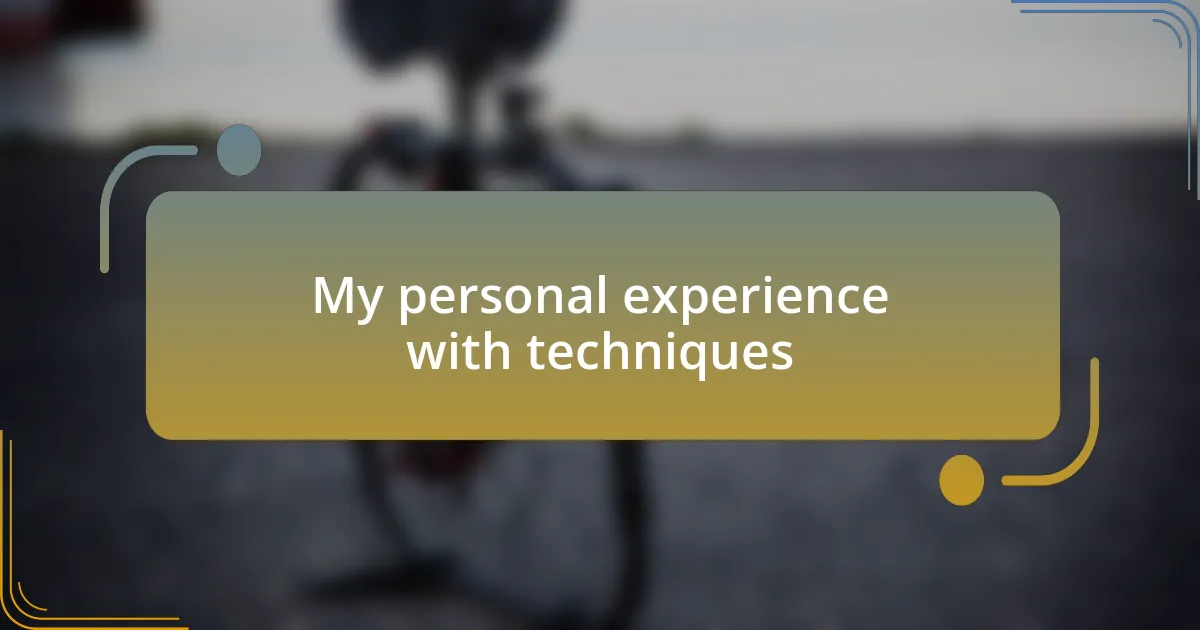
My personal experience with techniques
As I delved deeper into the Alexander Technique, I found a fresh perspective on how physicality shapes performance. This method, which emphasizes awareness of one’s body and movements, helped me shed some ingrained habits that were limiting my expression. I remember during rehearsals how a simple adjustment in posture allowed me to breathe more freely, instantly shifting my emotional state and making me feel more present on stage.
Similarly, exploring the Michael Chekhov technique introduced me to the world of imagination as a key component of acting. I still recall a moment where I used Chekhov’s concept of ‘psychological gestures’ to inform my character. By embodying physical movements aligned with my character’s inner thoughts, I created a connection that felt not just convincing, but transformative – both for me and the audience.
Lastly, the Viewpoints technique challenged my understanding of time and space in performance. I had an exhilarating experience during a collaborative piece where we improvised using this method, allowing the energy of the scene to dictate our actions. Have you ever felt the palpable energy in a room shift? It was electric; we were all deeply connected, creating a dynamic that I had never experienced before. This technique reinforced the idea that acting is not just about individual performance—it’s about the synergy created in collaboration.
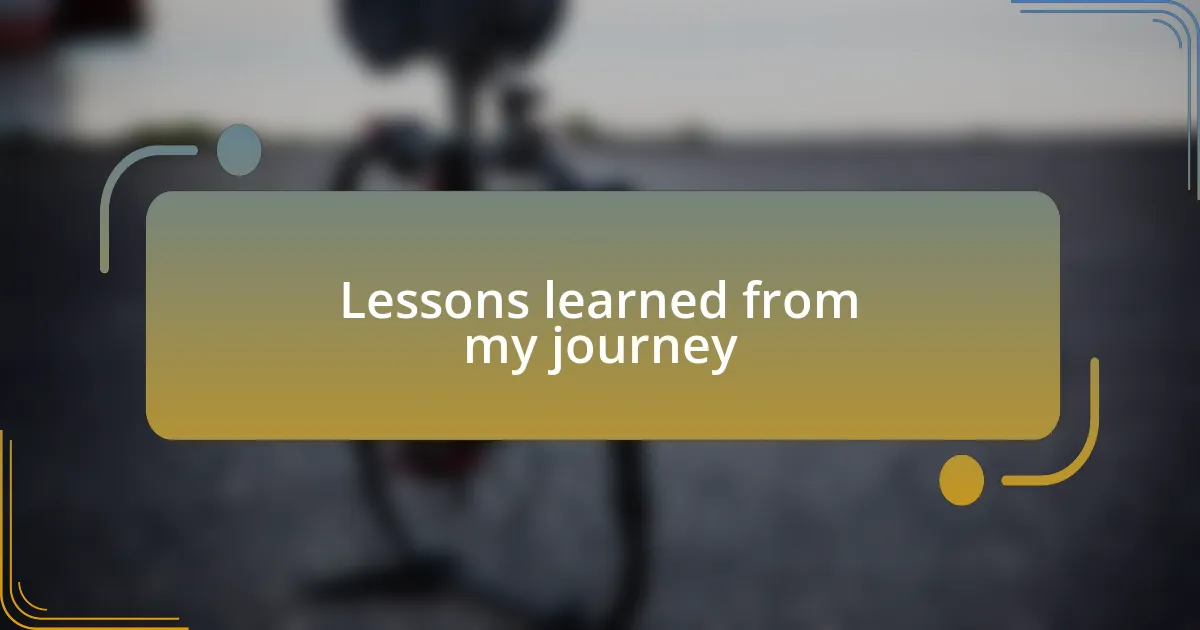
Lessons learned from my journey
Through my journey in acting techniques, I learned that vulnerability can be a source of strength. I recall a performance where I had to confront my fears on stage. Allowing my true emotions to surface led to a moment of raw honesty that resonated with the audience, leaving a lasting impact on both them and me. It made me realize that when we embrace our vulnerabilities, we unlock deeper connections.
Another significant lesson was the importance of adaptability. During a rehearsal for a new play, unexpected changes in direction from the director forced us to think on our feet. Instead of being frustrated, I chose to view it as an opportunity to experiment with character choices and scene dynamics. That flexibility not only enhanced my performance but also taught me to trust myself in chaotic moments.
Lastly, I discovered that collaboration is essential to the creative process. I remember a time when my scene partner and I were struggling to find the right rhythm in a dramatic scene. After a few failed attempts, we decided to step back, have an open dialogue about our perspectives, and reframe our approach. This honest communication transformed our performance, reminding me that every actor brings a unique energy that can elevate the collective experience.
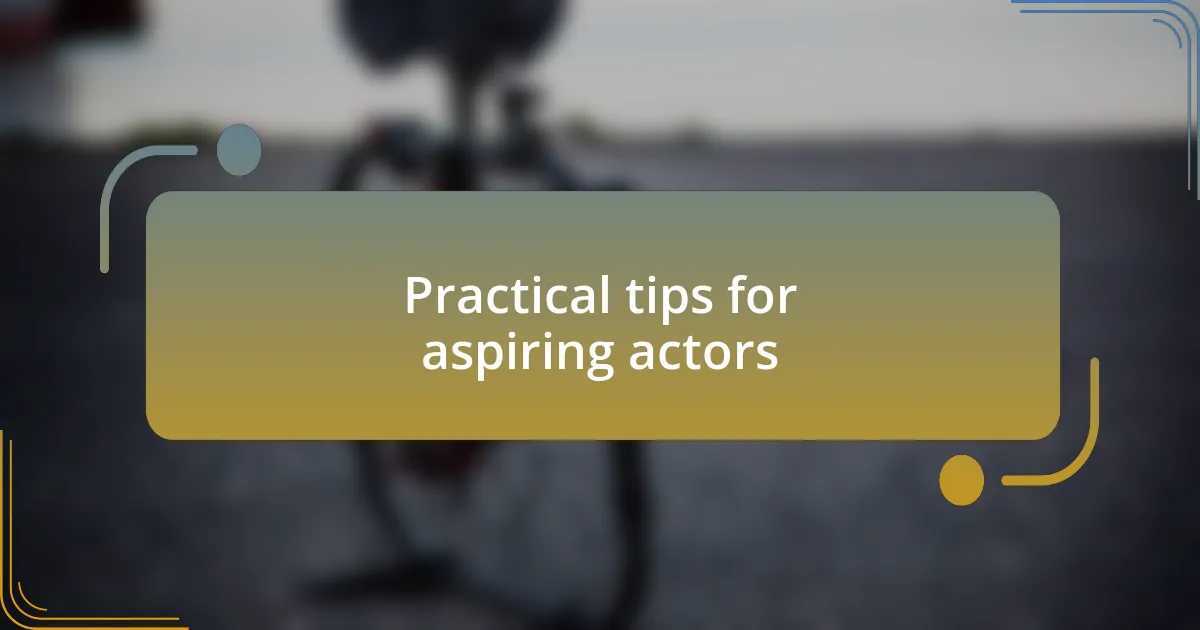
Practical tips for aspiring actors
When I first started auditioning, I learned the hard way that preparation is everything. I remember showing up to an audition without fully understanding the character’s backstory. It was a humbling experience to realize I hadn’t done my homework. Since then, I always dive deep into the script, exploring every character’s motivations and backstory. It makes a profound difference in how I connect with the role. Wouldn’t you feel more confident stepping into an audition knowing your character inside and out?
Another practical tip that transformed my approach to acting is the power of warm-ups. In earlier rehearsals, I’d often jump straight into the scene without taking time to loosen up. I started incorporating vocal and physical warm-ups, which completely changed my performance. It helps to clear the mind and shake off the nerves. I encourage aspiring actors to find a warm-up routine that works for them – it’s a game changer! How do you prepare to get in the zone?
Lastly, I can’t stress enough the importance of networking in the acting world. I remember attending workshops where I was intimidated to speak up. Over time, I learned that building relationships with fellow actors, directors, and producers can open doors to new opportunities. I began reaching out, sharing insights, and collaborating with others. It wasn’t just about landing roles; it became about creating a support system that inspires growth. Have you considered how cultivating these connections could enrich your journey in ways you hadn’t imagined?